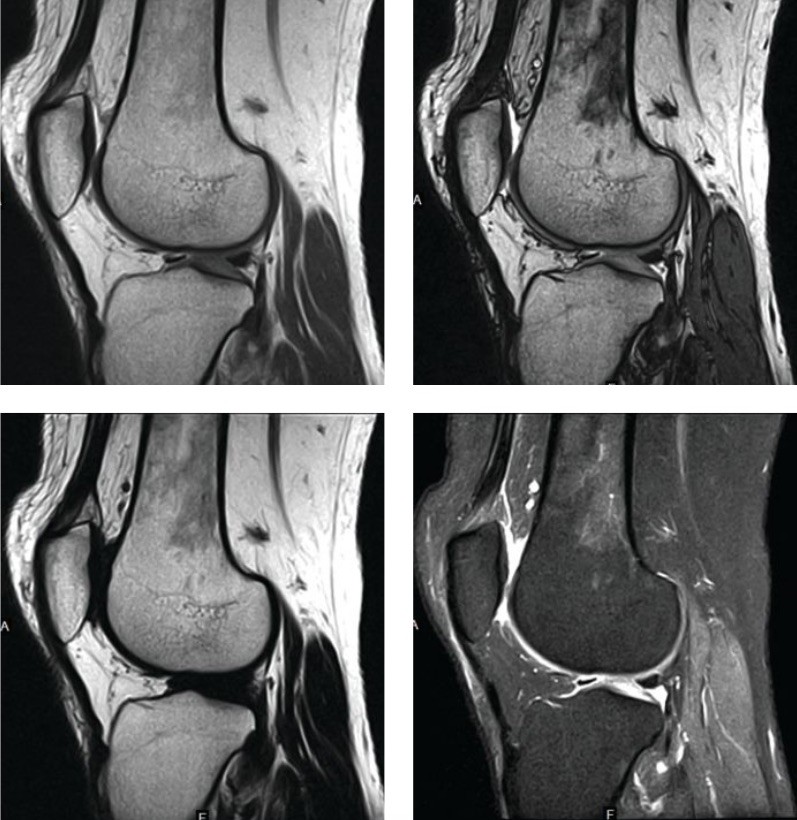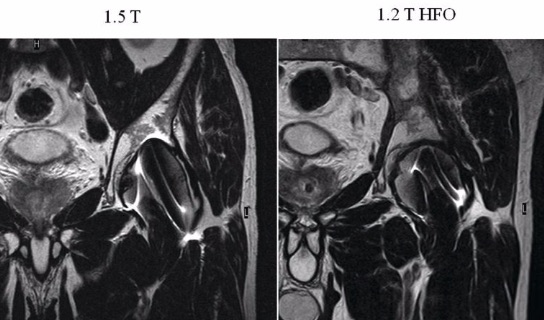
By Dr. John Feller
Our practice operates in a very competitive marketplace. About 26 MRI scanners serve about 400,000 patients in the Coachella Valley. Oasis provides us with a sustained competitive advantage, helping us stand out through the comfort of an open system that delivers image quality comparable to that of a 1.5T closed-bore system. With the high-fi eld 1.2T Oasis, we image patients ranging from routine brain and spine scans to contrast-enhanced angiography and brain spectroscopy. For these, Oasis delivers high-fi eld quality images. When imaging “off -center “joints, such as the shoulder, Oasis delivers even better quality images than 1.5T systems.We market services on the high-fi eld open (HFO) to referring physicians for its image quality and to patients for its openness.

We have been scanning patients with Oasis for seven years at our outpatient center in Indio, California. This center, one of three operated by Desert Medical Imaging (DMI) in the Coachella Valley, is just off Interstate Highway 10 across the street from a hospital. Most referrals come from physicians in the Valley, primarily orthopedic surgeons, neurologists, neurosurgeons and spine surgeons, as well as primary care physicians.We average between 14 and 16 patients per day, fi ve days a week. Patients are assigned to 30-minute slots. On our busiest days, we scan as many as 26. Our centers don’t have set closing hours—we scan until done. If our backlog gets greater than 48 hours, we schedule patients for Saturday. This is one way we have been able to maintain a competitive advantage compared to the nearby hospital and other centers that are only open 8 to 5 weekdays.Our case mix is about 40 percent orthopedic, 40 percent brain and spine and 20 percent everything else (including body applications). The openness of the Oasis makes it especially suited to large patients who do not fi t in closed-bore systems and claustrophobic or anxious patients. Referring physicians often refer these patients for scans on the Oasis. Other times, patients request the open scanner when fi eld is homogenous. Oasis’ advanced multidirectional shimming system called HOAST (Higher Order Active Shim Technology) automatically realigns these fl ux lines and homogenizes the fi eld.Fourth, fat separation (FatSep) sequences highlight the pathology. FatSep can both improve image clarity and increase productivity, using a Dixon technique that creates fat-only and water-only images. (Water-only images are “fat-suppressed.”) We use FatSep routinely to create up to four sets of images in a single acquisition. This saves us time by eliminating the need to do additional acquisitions.
The openness of the Oasis mitigates issues that arise with large and anxious patients, just as the table—with an upward limit of 660 pounds—is engineered to support large patients. (Although a substantial number of Oasis scans are orthopedic, we routinely visualize any part of the body, using the Oasis as we would any other high-fi eld MRI scanner.)DMI selectively sends patients who are large or anxious to the Oasis, as well as those who have metal implants or have had such implants removed. Removal can leave behind microscopic but signifi cant amounts of metal, which can degrade MRI images.Horizontal fi elds generated by 1.5T and 3T systems are especially vulnerable to metal artifact (see Figure 3). The artifact is substantially less on the Oasis (see Figure 4).Artifacts from metal implants are linearly related to fi eld strength and, therefore, already lessened by the slightly lower magnetic fi eld of the Oasis (1.2T versus conventional 1.5T). Oasis further reduces metal artifacts through the use of primeFSE (fast spin echo) and prime FIR (fast inversion recovery) sequences, which reduce distortion by manipulating the receiver bandwidth for short echo spacing.

We have found that the Oasis 1.2T delivers images of off -center joints that are better than those of 1.5T scanners. This is because closed systems typically require joints such as the shoulder, elbow and wrist to be positioned outside isocenter. There is no way to align the shoulder in the isocenter of a cylindrical system. Workarounds for the wrist, hand, fi nger or elbow require patients to put their arms over their heads in what we call the “Superman” position. Because the joint must be held there for an extended time, the chance of motion artifact—and the need to repeat the sequence—increases.The openness of the high-fi eld scanner—and lateral movement of the patient table—allows us to produce superior images of the shoulder, elbow or wrist . Images of “midline” joints (hips, spines, knees, ankles and feet) are at least as good as those on a 1.5T system. FatSep on the Oasis contributes substantially to image quality, especially when imaging large patients. On a closed system, fat suppression often fails for large patients because the patient’s shoulder touches the inside of the scanner bore. This may force the technologist to perform a repeat scan or to defer to a sequence that does not suppress fat.Unless suppressed, fat can obscure pathology; for example, if a subcutaneous layer overlies a rotator cuff tear. The underlying pathology, however, is clearly evident when such a patient is imaged on the Oasis using FatSep.
The openness of the Oasis relieves the anxiety that many patients feel, even ones who are not strictly defi ned as “claustrophobic.” Many patients prefer not to be scanned in a cylindrical system. Oasis provides them the option to have an open scan.Many large patients don’t have any option. Conventional high-fi eld scanners are just too small. Their shoulders, chests or abdomens actually touch the insides of the cylinder. For these patients, Oasis is essential.This is so for pediatric cases as well. The openness of the Oasis allows a parent to be with the infant or child—or sitting on a chair next to them, holding them or their hand—while the scan is being done. Similarly this lack of physical barrier is an advantage when scanning an Alzheimer’s patient who may be anxious about the scan. It can also be very important in marketing, particularly in pediatrics. Mothers will viral market your practice, if they have favorable experiences.Simply put, patient comfort and high-fi eld image quality are essential in our practice. Oasis provides both.